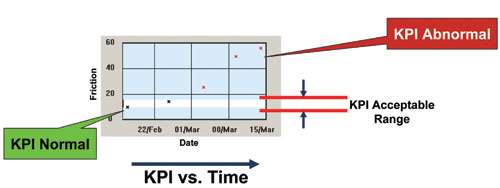Documentation to Diagnostics: Trends in Valve Repair
Not long ago, car owners often performed basic repairs and maintenance tasks themselves.
#maintenance-repair #basics
Similar shifts have taken place in the valve maintenance and repair industry. The driving factors behind those shifts include today’s fast-paced and highly competitive business environment, increasingly complex facilities, more stringent regulatory requirements, leaner in-house staffs, more advanced valve technologies and lessons learned during natural disasters such as Hurricane Katrina and the earthquake and tsunami that damaged Japan’s Fukushima nuclear power plant.
This article explores these trends, the forces behind them and how plant personnel can adapt to the changing landscape.
DOCUMENTATION
Discussions with end users reveal that the number one repair trend today relates to asset and repair documentation.
Thorough documentation of a facility’s valves—the types and locations of all valves in the plant, their specifications and their maintenance and repair histories—can aid personnel in planning maintenance activities, help technicians diagnose valve problems, streamline repairs, facilitate inventory management and help plant personnel fulfill reporting requirements.
Hurricane Katrina and Fukushima also illustrated to the world the importance of ensuring that valve data is protected offsite, available remotely in the event of an emergency. Hurricane Katrina waterlogged plant after plant along the Gulf Coast, destroying records or making them difficult to retrieve. At Fukushima, the records themselves were not destroyed but dangerous radiation levels made it impossible to retrieve them.
Having learned from these situations, a growing number of end users are looking for asset management systems that are accessible 24/7 via the Internet. Such systems mean that in the event of an emergency, personnel can easily order replacement valves and accessories, access repair records and reference valve specification information, such as temperatures and pressures.
These tools are becoming more widely available every day, and they are more powerful, user-friendly and adaptable than ever before. Service providers and original equipment manufacturers (OEMs) can differentiate themselves by offering such tools—and the added-value service of developing and maintaining their customers’ databases. (For more information about asset management tools, see “Asset Management: A Plant Manager’s Best Friend” in the Fall 2011 issue of Valve Magazine.)
MANUFACTURER-AUTHORIZED SERVICE PROVIDERS
The second-most-often cited trend in the valve repair business is end users’ growing preference for working with manufacturer-authorized service providers. The complexity of today’s facilities requires well-trained technicians who can troubleshoot and solve a variety of valve problems. In the past, many facilities had this expertise in-house, but cost-cutting measures and the retirement of experienced personnel have made that situation increasingly rare.
In today’s litigious environment, working with a third-party provider that is not OEM-trained and is not certified to the appropriate regulatory standards, such as those from the American Society of Mechanical Engineers (ASME), is inviting trouble. As a result, using OEM-authorized technicians to complete repairs and turnarounds continues to gain momentum.
RAPID VALVE REPLACEMENT PROGRAMS
Another often discussed issue is whether to repair a valve or replace it. There is no easy answer to this age-old question because too many situation-specific variables must be considered. Still, rapid valve replacement programs are making replacement a viable option in more cases.
A growing number of OEMs offer such programs, which substantially shorten turnaround times for simpler types of valves that are not critical or specialized. This is partly because participating OEM-authorized service providers have on-hand stock that can be quickly pulled from the shelf and configured to meet short delivery windows—sometimes same-day or even in as little as a few hours. Not all valves today have to be ordered through the factory; some valves can be replaced within a repair or outage cycle, giving the end user a brand new valve under full OEM warranty.
OUTSOURCING VS. IN-HOUSE
In recent years, outsourcing valve maintenance and repair services has been a prominent trend. While this trend was previously found primarily in established markets, it is now gaining momentum in developing regions, as well.
The increased number and larger sizes of facilities today (resulting in greater numbers of valves to maintain) and the ever-present shortage of skilled and experienced manpower make fielding in-house maintenance teams challenging. Factor in the cost and time involved in recruiting, training and retaining staff, and outsourcing becomes a more attractive option for many end users.
This creates continued opportunities for quality OEM-authorized service providers that can deliver the products, service and expertise end users need.
Another emerging trend is the use of “smart” valve diagnostics technology. This technology has evolved greatly in the valve industry in the past 10 years, and just as a new car can self-diagnose many problems, so, too can many of today’s valves. Valve performance is monitored and the data is collected so this information can be used to identify causes of performance problems and even predict a problem before it disrupts a process.
The following example illustrates how this works: A “smart” device with on-valve diagnostics is placed on a valve to monitor its performance in real time. Over time, a condition, such as excess friction, is identified and a warning message is sent to a remote help desk. The local service provider is called. The technician sees the warning message and the potential cause of the problem. He might use a tablet computer to access the asset management system that contains the valve’s specifications, maintenance history and troubleshooting guide. He could then identify the parts needed to complete the repair, check the service firm’s on-hand inventory and even view reference videos produced by the OEM.
These trends can all be boiled down to a growing preference for that grocery-story development: the desire for one-stop shopping. Increasingly, end users are seeking a single valve service provider that can provide service, parts, valves and advanced maintenance planning technology across an entire facility, regardless of type and make. By diversifying offerings to meet this demand, service providers can position themselves for success in the years to come. On the other hand, end users who partner with quality providers that can deliver this breadth and depth may find significant opportunities to improve their facilities’ performance.
Gary Ostrowski is director of product management – aftermarket with GE Energy’s Masoneilan and Consolidated product lines (www.ge-energy.com). Reach him at gary.ostrowski@ge.com.
RELATED CONTENT
-
HVOF Coatings for Severe Service Valves
Chrome carbide is one coating that can be done during manufacturing or repairs that extends service life of valves and other flow control components.
-
The Next Step in Functional Safety
The primary goal of functional safety is to prevent accidents.
-
Inspection and Maintenance Can Alleviate Supply Chain Woes
As industrial companies confront the challenges posed by global supply chain constraints, extra attention should be paid to maintenance as a strategy for minimizing the need for new equipment and components.












 Unloading large gate valve.jpg;maxWidth=214)